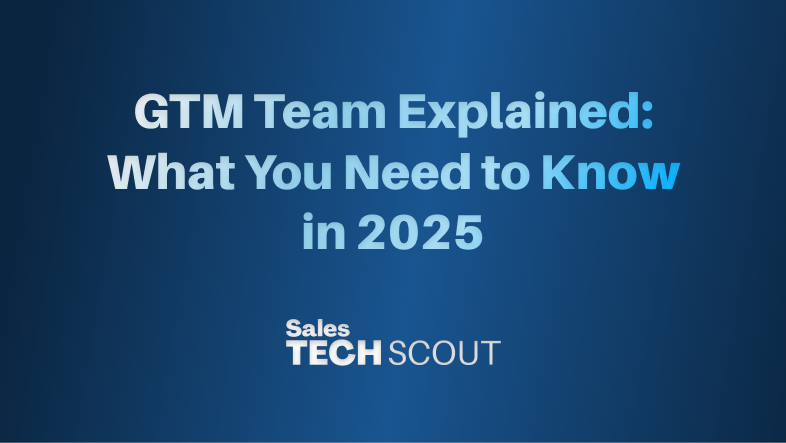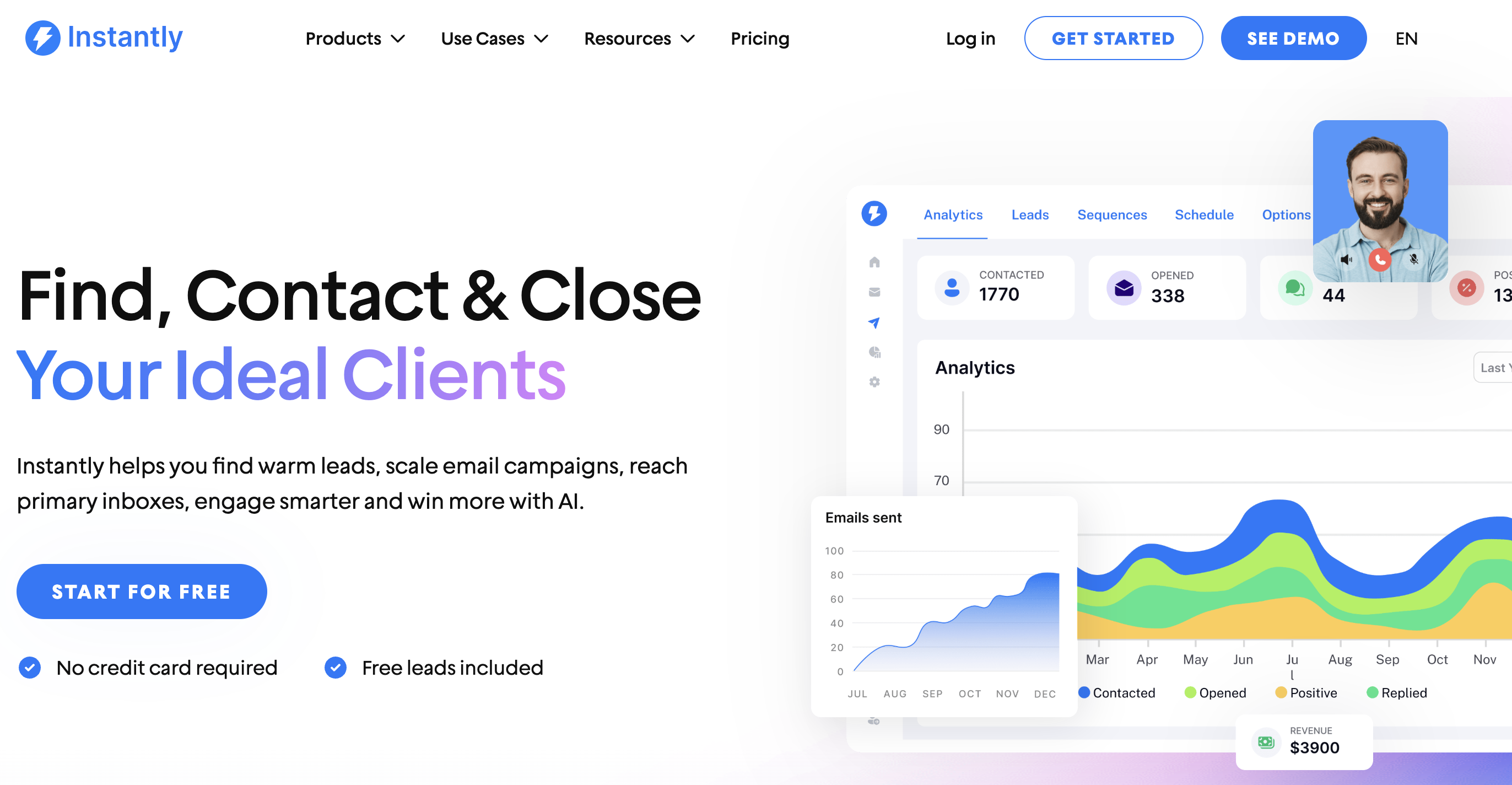GTM Team Explained: What You Need to Know in 2025


Introduction
The go-to-market (GTM) team has evolved from a simple launch coordination group into the strategic backbone of modern business growth.
As markets become increasingly competitive and customer acquisition costs continue to rise, companies are recognizing that successful product launches and sustained growth require more than just great products—they need expertly coordinated GTM teams that can navigate complex buyer journeys and deliver measurable results.
In 2025, GTM teams represent the convergence of sales, marketing, product, and customer success functions, working together to create seamless customer experiences from initial awareness through long-term retention. This comprehensive guide explores how modern GTM teams operate, the tools they rely on, and the strategies that drive exceptional results.

What Is a GTM Team? Complete Definition and Structure
A go-to-market team is a cross-functional group responsible for bringing products or services to market and driving sustainable revenue growth.
Unlike traditional siloed departments, GTM teams break down organizational barriers to create unified strategies that align every customer-facing function toward common objectives.
Core GTM Team Functions:
Modern GTM teams typically encompass five primary areas of responsibility. Marketing operations focus on demand generation, lead nurturing, and brand positioning to create awareness and interest among target audiences.
Sales development handles prospecting, qualification, and opportunity creation to convert marketing interest into sales pipeline. Product marketing manages positioning, messaging, competitive analysis, and launch coordination to ensure products meet market needs.
Customer success oversees onboarding, retention, expansion, and advocacy to maximize customer lifetime value. Revenue operations provides analytics, forecasting, and process optimization to improve overall GTM efficiency.
Traditional Team Structure vs GTM Team Approach:
Traditional organizations operate with distinct departments that work independently, often leading to misaligned goals and poor customer experiences.
Marketing generates leads without understanding sales capacity, sales pursues opportunities without clear value propositions, and customer success inherits accounts without context about the sales process.
GTM teams eliminate these inefficiencies by creating shared accountability for revenue outcomes. Team members work collaboratively on unified campaigns, share performance metrics, and optimize for overall customer success rather than departmental KPIs.

How GTM Teams Apply Modern Strategies in 2025
Successful GTM teams in 2025 leverage data-driven methodologies and customer-centric approaches that adapt to rapidly changing market conditions.
These strategies focus on creating predictable, scalable growth engines rather than relying on sporadic campaign successes.

Account-Based Marketing (ABM) Integration
ABM has become the dominant B2B GTM strategy, with 87% of high-growth companies adopting account-based approaches. GTM teams create detailed ideal customer profiles (ICPs) and target specific high-value accounts with personalized campaigns across multiple channels.
Implementation Process:
- Sales and marketing collaborate to identify target accounts based on revenue potential, strategic fit, and buying signals
- Product marketing develops account-specific messaging and content that addresses unique pain points
- Marketing operations orchestrates multi-channel campaigns including email, LinkedIn, direct mail, and webinars
- Sales development executes coordinated outreach at multiple stakeholder levels within target accounts
- Customer success monitors engagement and provides insights for campaign optimization
Revenue Operations Excellence
Modern GTM teams rely heavily on revenue operations (RevOps) to create predictable growth. RevOps teams analyze the entire customer lifecycle to identify bottlenecks, optimize conversion rates, and forecast revenue with accuracy.
Key RevOps Activities:
- Lead scoring and routing optimization to ensure sales teams focus on highest-potential opportunities
- Sales process standardization and training to improve win rates and reduce sales cycle length
- Customer health scoring and churn prediction to enable proactive retention efforts
- Pricing and packaging analysis to maximize average deal size and lifetime value
Product-Led Growth (PLG) Adoption
Companies are increasingly combining traditional sales-led approaches with product-led growth strategies. GTM teams work closely with product teams to create frictionless trial experiences that convert users into paying customers.
PLG Integration Tactics:
- Product marketing optimizes onboarding flows to accelerate time-to-value
- Sales development identifies high-intent trial users for direct outreach
- Customer success creates in-app engagement programs that drive feature adoption
- Marketing operations tracks product usage data to inform lead scoring and segmentation
2025 GTM Tool Landscape: Essential Platforms for Modern Teams
In 2025, the GTM tool ecosystem has evolved significantly, with new platforms emerging to address the changing needs of sales and marketing teams. These tools focus on automation, data enrichment, and multi-channel outreach while maintaining compliance with privacy regulations.
Here are the top tools you should focus on for your GTM strategy in 2025👇
Clay
Clay is a data enrichment and automation platform that combines multiple data sources into a single workflow. It allows GTM teams to build complex data operations using a spreadsheet-like interface, pulling information from over 50 data providers including LinkedIn, Apollo, and ZoomInfo. Clay excels at creating custom lead scoring models and automating repetitive research tasks that traditionally required manual effort.

Instantly
Instantly is a cold email automation platform designed for high-volume outreach campaigns. It offers unlimited email accounts, advanced deliverability features, and AI-powered email warm-up capabilities. The platform specializes in managing multiple sender domains and provides detailed analytics on email performance, making it ideal for agencies and companies running large-scale prospecting campaigns.

Lemlist
Lemlist is a personalized cold outreach platform that combines email, LinkedIn, and phone outreach in unified sequences. Its standout feature is the ability to create highly personalized images and videos at scale, using prospect data to customize visual content. The platform also includes a comprehensive CRM system and advanced reporting capabilities for multi-channel campaigns.

Enrow
Enrow is a contact data verification and enrichment platform that focuses on providing accurate email addresses and phone numbers for B2B prospects. It uses multiple verification methods and real-time validation to ensure high deliverability rates. Enrow integrates with popular CRMs and outreach tools, making it easy to enrich existing databases with verified contact information.

Pronto
Pronto is a sales acceleration platform that automates prospecting workflows and lead qualification processes. It uses AI to identify high-intent prospects based on behavioral signals and company data. The platform excels at creating targeted prospect lists and finding relevant business signals, helping sales teams focus on the most promising opportunities. They also have a great waterfall enrichment feature.

Mailtester.ninja
Mailtester.ninja is an email deliverability testing and monitoring tool that helps GTM teams optimize their email campaigns. It provides detailed analysis of email authentication, spam score testing, and deliverability monitoring across major email providers. The platform is essential for maintaining sender reputation and ensuring emails reach prospects' inboxes.

Fireflies
Fireflies is an AI-powered conversation intelligence platform that automatically records, transcribes, and analyzes sales calls and meetings. It integrates with popular video conferencing tools and CRMs to capture important insights from customer conversations. GTM teams use Fireflies to improve sales coaching, track deal progress, and identify common objections or success patterns.

FullEnrich
FullEnrich is a data enrichment platform that aggregates contact information from multiple premium data sources. It provides email addresses, phone numbers, and professional details with high accuracy rates. The platform offers waterfall enrichment, trying multiple data sources sequentially to maximize the number of contacts enriched from any given list.

Smartlead
Smartlead is a cold email automation platform that specializes in managing multiple email accounts and maintaining high deliverability rates. It includes built-in email warm-up, spam testing, and deliverability optimization features. The platform is particularly strong for agencies and businesses that need to scale cold email outreach while maintaining inbox placement.

HeyReach
HeyReach is a LinkedIn automation and social selling platform that helps sales teams scale their LinkedIn outreach efforts. It automates connection requests, messages, and follow-ups while mimicking human behavior to avoid platform restrictions. The tool includes advanced targeting capabilities and integration with popular CRMs for seamless workflow management.

Emelia
Emelia is a cold email platform focused on European markets and GDPR compliance. It offers automated email sequences, A/B testing capabilities, and detailed analytics while maintaining strict compliance with European privacy regulations. The platform includes built-in unsubscribe management and consent tracking features.

La Growth Machine
La Growth Machine (LGM) is a multi-channel outreach automation platform that combines LinkedIn, email, and phone outreach in unified sequences. It's particularly popular in European markets and offers advanced personalization capabilities using prospect data and behavioral triggers. The platform emphasizes compliance and includes features for managing GDPR requirements.

Tamtam
Tamtam is a conversational marketing and lead qualification platform that uses AI-powered chatbots to engage website visitors and qualify leads. It automates initial prospect interactions and can schedule meetings directly with sales reps based on qualification criteria. The platform integrates with popular CRMs and marketing automation tools to streamline the lead handoff process.

These tools represent the cutting edge of GTM technology in 2025, focusing on automation, personalization, and compliance while helping teams scale their outreach efforts effectively. The key to success lies in selecting the right combination of tools that align with your specific GTM strategy and integrating them into cohesive workflows that maximize efficiency and results.
Real-World GTM Team Examples and Case Studies
Understanding how successful companies structure and operate their GTM teams provides valuable insights for organizations building or optimizing their own approaches.
SaaS Startup: Rapid Market Entry
A Series A SaaS company targeting mid-market financial services firms built a lean GTM team focused on rapid validation and growth.
Team Structure (12 people):
- GTM Leader (VP of Revenue)
- Marketing: 2 demand generation specialists, 1 content creator
- Sales: 2 account executives, 2 sales development reps
- Product Marketing: 1 positioning specialist
- Customer Success: 2 customer success managers
- RevOps: 1 operations analyst
Key Strategies:
The team implemented a highly targeted ABM approach, identifying 500 ideal prospect companies and creating personalized campaigns for each account. They used a combination of LinkedIn outreach, direct mail, and industry event marketing to generate initial meetings.
Results in 12 Months:
- Generated $2.3M ARR from initial target list
- Achieved 23% trial-to-paid conversion rate
- Maintained 94% gross revenue retention
- Average deal size: $45,000 ACV
Enterprise Technology: Market Expansion
A established cybersecurity company expanded into the healthcare vertical with a dedicated GTM team focused on compliance-heavy buyers.
Specialized Team Structure (28 people):
- Industry GTM Director
- Marketing: 6 specialists (events, content, digital, PR)
- Sales: 8 enterprise account executives, 4 sales engineers
- Product Marketing: 3 vertical specialists
- Customer Success: 4 customer success managers, 2 implementation consultants
- RevOps: 1 operations manager
Vertical-Specific Approach:
The team developed healthcare-specific messaging emphasizing HIPAA compliance, integrated with EMR systems, and created case studies from existing healthcare customers. They invested heavily in industry conferences and webinars featuring healthcare CISOs.
18-Month Results:
- Captured 12% market share in target healthcare segment
- Generated $18M pipeline from healthcare prospects
- Achieved 67% win rate in competitive deals
- Average healthcare deal size: $280,000
B2B Marketplace: Two-Sided Growth
A B2B marketplace connecting manufacturers with distributors required unique GTM strategies for both supply and demand sides.
Dual-Sided Team Structure (35 people):
- Chief Revenue Officer
- Supply Side: 8 business development reps, 3 onboarding specialists
- Demand Side: 6 account executives, 4 customer success managers
- Marketing: 5 growth marketers, 2 content creators
- Product Marketing: 2 messaging specialists
- RevOps: 5 analysts and operations managers
Balanced Growth Strategy:
The team coordinated supply and demand generation to maintain marketplace liquidity. They used data analytics to identify geographic markets with optimal supply/demand ratios and launched city-by-city expansion campaigns.
2-Year Growth Metrics:
- Onboarded 2,400 manufacturers and 8,100 distributors
- Facilitated $127M in transaction volume
- Maintained 85% month-over-month supplier retention
- Achieved 73% annual distributor growth rate
GTM Team Performance Metrics and KPIs
Measuring GTM team success requires comprehensive metrics that span the entire customer lifecycle. Modern teams track both leading and lagging indicators to optimize performance continuously.
Pipeline and Revenue Metrics
Core Revenue KPIs:
- Monthly Recurring Revenue (MRR) growth rate
- Customer Acquisition Cost (CAC) by channel
- Customer Lifetime Value (LTV) and LTV:CAC ratio
- Sales cycle length and win rates
- Pipeline velocity and conversion rates
Marketing and Demand Generation
Marketing Performance Indicators:
- Marketing Qualified Leads (MQLs) and conversion rates
- Cost per lead by channel and campaign
- Marketing attribution and revenue influence
- Content engagement and lead nurturing effectiveness
- Brand awareness and share of voice metrics
Sales and Customer Success
Sales and Retention KPIs:
- Sales-accepted lead rates and sales cycle efficiency
- Quota attainment and rep productivity metrics
- Customer onboarding time and success rates
- Net Revenue Retention (NRR) and churn rates
- Customer satisfaction and Net Promoter Scores

Building and Scaling Your GTM Team
Creating an effective GTM team requires careful planning around hiring, structure, and processes. The most successful organizations start with core functions and scale systematically based on growth stage and market requirements.
Startup Phase (Pre-Series A)
Early-stage companies should focus on validation and repeatability with lean teams that wear multiple hats.
Essential Roles:
- Founder or VP of Revenue (GTM leadership)
- Marketing generalist (demand generation and content)
- Sales generalist (prospecting and closing)
- Customer success specialist (onboarding and retention)
Key Priorities:
Establish product-market fit, validate ideal customer profiles, and create repeatable sales processes. Focus on learning and iteration rather than scale.
Growth Phase (Series A-B)
Companies with proven product-market fit should specialize roles and invest in systems and processes.
Expanded Structure:
- GTM leadership and strategy
- Specialized marketing roles (demand gen, content, product marketing)
- Sales development and account executive separation
- Dedicated customer success and support functions
- Revenue operations for analytics and optimization
Scale Phase (Series C+)
Mature companies require sophisticated GTM organizations with specialized vertical teams and advanced operations.
Enterprise GTM Structure:
- C-level revenue leadership (CRO, CMO, CCO)
- Geographic or vertical GTM teams
- Specialized roles (sales engineering, implementation, training)
- Advanced analytics and business intelligence
- Partnership and channel development
Common GTM Team Challenges and Solutions
Even well-structured GTM teams face predictable challenges that can derail growth momentum. Understanding these obstacles and their solutions helps teams maintain high performance.
Misaligned Goals and Incentives
Problem: Different functions optimize for departmental metrics rather than overall revenue outcomes.
Solution: Implement unified compensation plans and shared OKRs that reward collaboration. Create revenue-based incentives for marketing teams and customer success metrics for sales teams.
Data Silos and Poor Visibility
Problem: Teams work with incomplete or conflicting data, leading to poor decision-making.
Solution: Invest in integrated technology stacks and revenue operations capabilities. Establish single sources of truth for key metrics and implement regular data review processes.
Scaling Communication and Coordination
Problem: As teams grow, coordination becomes difficult and execution suffers.
Solution: Implement structured communication rhythms including daily standups, weekly pipeline reviews, and monthly strategic planning sessions. Use project management tools to track cross-functional initiatives.
Future of GTM Teams: Trends for 2025 and Beyond
GTM teams continue evolving as technology advances and buyer behaviors change. Understanding emerging trends helps teams prepare for future market conditions.

AI and Automation Integration
Artificial intelligence is transforming GTM operations through predictive analytics, automated personalization, and intelligent lead routing. Teams are using AI to optimize pricing, predict churn, and generate content at scale.
Community-Led Growth
Companies are building communities around their products and leveraging user-generated content, peer recommendations, and network effects to drive growth. GTM teams are evolving to support community managers and advocate programs.
Privacy-First Marketing
Increasing privacy regulations and cookie deprecation are forcing GTM teams to adopt first-party data strategies and privacy-compliant marketing approaches. Teams are investing in direct customer relationships and consent management.
Conclusion
GTM teams represent the future of revenue generation, breaking down traditional silos to create customer-centric growth engines. The most successful organizations in 2025 will be those that can effectively coordinate sales, marketing, product, and customer success functions around unified strategies and shared metrics.
Building an effective GTM team requires careful consideration of structure, tools, processes, and culture. Whether you're a startup validating product-market fit or an enterprise expanding into new markets, the principles outlined in this guide provide a foundation for sustainable, scalable growth.
The investment in GTM team development pays dividends through improved customer experiences, higher conversion rates, and predictable revenue growth. As competition intensifies and customer expectations continue rising, organizations with strong GTM capabilities will maintain significant competitive advantages.
Ready to build or optimize your GTM team? Start by assessing your current structure, identifying gaps in coordination and measurement, and implementing the strategies and tools that align with your growth stage and market opportunity.
Subscribe to Our Newsletter
To Never Miss a Thing






.avif)


